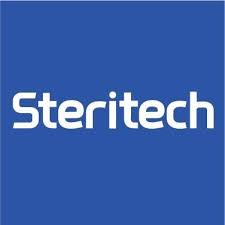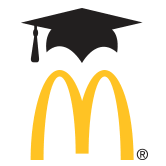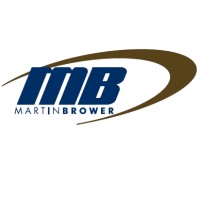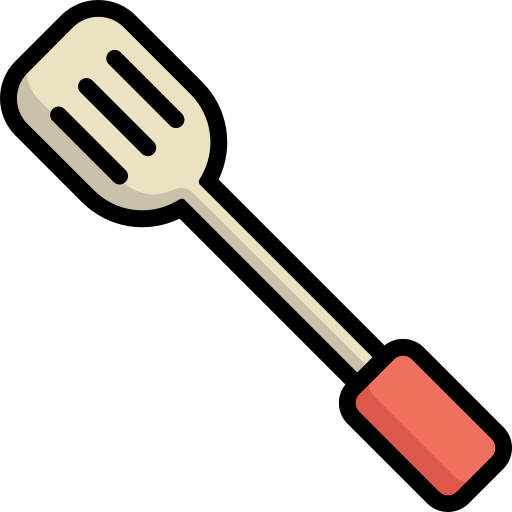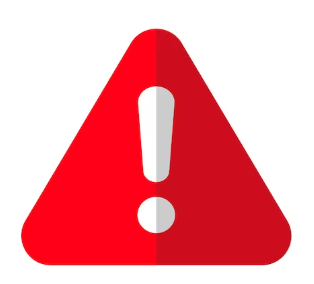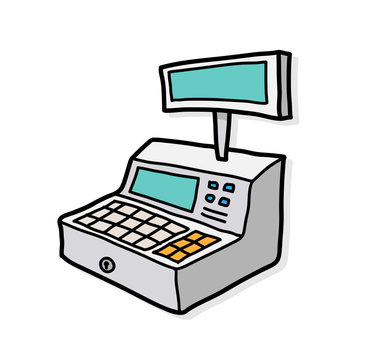Title Page
-
Site conducted
-
Date
-
Prepared by
Food Safety Procedure Verification
Critical Food Safety
-
FS1-CA<br>Restaurant is free of infestation and/or signs of active pest (animal/insect) infestation in the restaurant building, adjoining corral and any area within 10 feet (3m) of the building.<br><br>Assessment: Confirm there are no signs of pests (eggs, droppings, damage from chewing, nests etc.). Walk around the interior of the restaurant, including storage areas, and look under shelves and equipment to ensure there is no presence of rodents, cockroaches, small flies, chewed boxes/food/wires, and/or droppings. Walk around the exterior within 10 feet of the restaurant and the corral area to ensure no pest infestation or signs of infestation are present.
-
Reason:
- Inside the restaurant has visible infestation
- Inside the restaurant shows signs of active infestation
- Outside the restaurant has visible infestation
- Outside the restaurant shows signs of active infestation
- Other
-
Please specify other:
-
FS1-CA-01<br>Restaurant complies with local and provincial Food Safety regulations and is not operating in conditions or situation which could be considered immediate health hazard by local Health Department (which could lead to an order for closure). If any of the below situations are observed, mark this question no and check the reason(s) that apply below:<br><br>Assessment:<br>Confirm restaurants are not operating in conditions or with situations that could be considered immediate health hazards by the local Health Department (and could lead to an Order for Closure). Examples include: <br>• Pest infestation (Cite FS1 instead)<br>• Lack of safe potable water (i.e., using tap water during a boil water order or advisory where operation has not been approved by the local Health Department and Quality Systems <br>• Sewage back-up/flooding<br>• No hot and cold running water available or under pressure <br>• Power outage <br>• Inadequate refrigeration (i.e. walk-in cooler not meeting temperature standards and there are no other options for refrigeration) <br>• Situations where food is found to be contaminated or adulterated
-
Reason
- Sewage back-up
- No hot and cold running water under pressure
- Power outage
- Other (describe)
-
Please specify reason:
-
FS2-CA<br>The internal temperatures of beef patties after cooking are at or above 160° F (71° C) or higher as per local requirements.<br><br>Assessment:<br>Ask the manager or crew member to let you know when the next run of any one beef product will be cooked so that you can check them. If not available, you may ask them to cook product provided the restaurant is serving the menu item at the time. Take the internal temperature of the product immediately after cooking (Do not take temperatures of product in the hot holding unit- these products are controlled by time). Notify the manager immediately if the product does not meet the required food safety internal temperature standard. Ask them to make the necessary adjustments per the Food Safety manual and ask the manager to cook another run of patties to ensure that the issue is corrected. Ask the manager to demonstrate that the temperatures are correct; document in your notes that you confirmed that corrective action was taken.
-
Reason
- Temperature settings and cooking timers are not set correctly
- Maximum run size exceeded
- Patties not laid and removed in the proper sequence
- Release sheets are not in good condition or not tightly placed on platen
- Release sheets are not squeegeed between every run and wiped off with a grill cloth at least four times every hour
- Patties not solidly frozen or shows signs of thawing
- Grill is not in good repair
- Other
-
Please specify reason:
-
FS3-CA<br>The internal temperatures of chicken products after cooking are at or above 165° F (74° C) or higher as per local requirements.<br><br>Assessment:<br>Ask the manager or crew member to let you know when the next run of any one poultry product will be cooked so that you can check them. If not available, you may ask them to cook product provided the restaurant is serving the menu item at the time. Take the internal temperature of the product after cooking (Do not take temperatures of product in the hot holding unit- these products are controlled by time).Notify the manager immediately if the product does not meet the required food safety internal temperature standard. Ask them to make the necessary adjustments per the Food Safety manual and ask the manager to cook another run of product to ensure that the issue is corrected. Ask the manager to demonstrate that the temperatures are correct; document in your notes that you confirmed that corrective action was taken.
-
Reason
- Temperature settings and cooking timers are not set correctly
- Maximum run size exceeded
- Proper fryer baskets not being used or are overfilled
- Oil levels in fryers are not correct
- Portions not solidly frozen or shows signs of thawing
- Fryer is not in good repair
- Other
-
Please specify reason:
-
FS4-CA<br>The internal temperatures of Filet-O-Fish after cooking are at or above 160° F (71° C) or higher as per local requirements.<br><br>Assessment:<br>Ask the manager or crew member to let you know when the next run of any one fish/seafood product will be cooked so that you can check them. If not available, you may ask them to cook product provided the restaurant is serving the menu item at the time. Take the internal temperature of the product after cooking (Do not taketemperatures of product in the hot holding unit- these products are controlled by time).Notify the manager immediately if the product does not meet the required food safety internal temperature standard. Ask them to make the necessary adjustments per the Food Safety manual and ask the manager to cook another run of product to ensure that the issue is corrected. Ask the manager to demonstrate that the temperatures are correct; document in your notes that you confirmed that corrective action was taken.
-
Reason
- Temperature settings and cooking timers are not set correctly
- Maximum run size exceeded
- Proper fryer baskets not being used or are overfilled
- Oil levels in fryers are not correct
- Portions not solidly frozen or shows signs of thawing
- Fryer is not in good repair
- Other
-
Please specify reason:
-
FS5-CA<br>The internal temperatures of breakfast sausage after cooking are at or above 160F (71C) or higher as per local requirements.<br><br>Assessment:<br>Ask the manager or crew member to let you know when the next run of breakfast sausage will be cooked so that you can check them. If not available, you may ask them to cook product provided the restaurant is serving the menu item at the time. Take the internal temperature of the product after cooking (Do not take temperatures of product in the hot holding unit- these products are controlled by time). Notify the manager immediately if the product does not meet the required food safety internal temperature standard. Ask them to make the necessary adjustments per the Food Safety manual and ask the manager to cook another run of product to ensure that the issue is corrected. Ask the manager to demonstrate that the temperatures are correct; document in your notes that you confirmed that corrective action was taken.
-
Reason
- Temperature settings and cooking timers are not set correctly
- Maximum run size exceeded
- Patties not laid and removed in the proper sequence
- Release sheets are not in good condition or not tightly placed on platen
- Release sheets are not squeegeed between every run and wiped off with a grill cloth at least four times every hour
- Patties not solidly frozen or shows signs of thawing
- Grill is not in good repair
- Other
-
Please specify reason:
-
FS6<br>Cooked McMuffin round eggs have gelled yolks (are not runny). Internal temperatures are at or above 155F (68C).<br><br>Assessment:<br>Ask the manager or crew member to let you know when the next run of round eggs will be cooked so that you can check them. If not available, you may ask them to cook product provided the restaurant is serving the menu item at 2024 Food Safety Visit Version: 2023NO01 Page 6 of 27the time. Take the internal temperature of the product after cooking (Do not take temperatures of product in the hot holding unit- these products are controlled by time). Notify the manager immediately if the product does not meet the required food safety internal temperature standard. Ask them to make the necessary adjustments per the Food Safety manual and ask the manager to cook another run of product to ensure that the issue is corrected. Ask the manager to demonstrate that the temperatures are correct; document in your notes that you confirmed that corrective action was taken.
-
Reason
- Temperature settings and cooking timers are not set correctly
- Eggs not laid and removed in the proper sequence
- Egg ring not positioned properly on the grill surface or egg cooker not level on the floor
- Improper amount of water is poured into the center of the egg ring or timer is not started immediately after pouring the water
- Egg ring or egg cooker is not in good repair
- Grill is not in good repair
- Other
-
Please specify other:
-
FS7<br>The on duty manager (or staff assigned to complete the checklist) is certified in food safety and can demonstrate they have been trained on properly completing the Food Safety Daily Checklist, including the ability to take corrective action. <br><br>Assessment:<br>Confirm/verify that the manager-on-duty/on-the-floor or a minimum of one manager that is currently on site (NOT SERVSAFE, internal) is trained in food safety. Ask manager-on-duty to access:<br>• The Digital Food Safety platform<br>• Provide documentation (Paper or electronic format) that the manager on-duty has been verified or re-verified within the last 15 months.<br><br>If a crisis is occurring during the visit, or a manager is doing compliance checklists, ensure that the process is observed, and the manager is reacting appropriately. Manager in charge can locate pyrometer, login to DFS platform and complete a Food Safety checklist and/or show Food Safety reports/Health Inspection reports/Pest Control to the auditor.
-
Reason
- No appropriately food safety trained manager present during the shift
- Manager does not know how to complete Food Safety Daily Checklist
- Manager does not know how to perform corrective actions
- Manager does not know how to correctly meet Critical questions
- Other (list areas of managers' lack of knowledge)
-
FS8<br>Critical to food safety products (shredded iceberg lettuce, pasteurized shake/sundae mix, chilled ready-to-eat meats and those labelled with 'Use By', cheese) shelf-lives are being adhered to.<br><br>Assessment:<br>Only assess products that are critical to food safety here:<br>• Raw and ready-to-eat meat<br>• Raw and ready-to-eat poultry incl. eggs<br>• Raw and ready-to-eat Fish/Seafood<br>• Raw cut produce (Tomatoes, Lettuce, other leafy greens etc.) and cooked produce (grilled onions etc.)<br>• Dairy (Milk, cheese etc.)<br><br>Primary Shelf Life<br>• Assess all critical to food safety products in all areas (primary storage and secondary storage) to confirm that no products that are identified as critical, have exceeded their primary shelf life. <br><br>Secondary Shelf Life<br>• Assess all critical to food safety products stored at room temperature (assembly table, egg cooker, poutine <br>station, etc.) for secondary shelf life. NOTE: Do not assess while product is in the process of being preppedfor future use (prepping Cambro bins of lettuce, tomatoes, etc.) . <br>• Do not evaluate bulk milk/cream for secondary shelf life when stored in dispenser unit. Evaluate these <br>products for primary shelf life only. <br>• Do not evaluate shake/sundae mix for shelf life when stored in the soft serve machine. Evaluate this product for primary shelf life only. NOTE: If shake/sundae is removed/saved from the heat treatment cycle and used Cite under FS-26CA instead.
-
Reason
- Product not labelled
- Product past shelf life
- Other
-
Please specify other:
Scored Food Safety
-
FS9-CA<br>Handwashing sinks. There is running water and required supplies at all handwashing sinks. Handwashing sinks are easily accessed by employees and only used for hand washing, not preparing food or storing equipment.<br><br>Assessment:<br>Confirm/Verify all hand sinks, including crew and guest restrooms are meeting the following requirements: <br>• Hand wash sinks present where needed and not converted/removed.<br>• One stocked functional soap dispenser with approved soap present. (NOTE: Unapproved product is Cited under FS-28CA)<br>• Paper towels or functioning hand dryer (NOTE: Hand dryers are only acceptable in guest washrooms). Paper towels must be present in the dispenser and not stored loose, to avoid any contamination.<br>• Hand wash sink is functional (has hot and cold water) and provides a minimum water temperature of 100 oF within 60 seconds. Faucet provides a constant stream of water at an appropriate pressure (uninterrupted and facilitates handwashing).<br>• A sign reminding employees to wash hands is available at every Employee handwash sink. (NOTE: Do not Cite for sinks not used by employees i.e., guest washrooms)<br>• A garbage can is available nearby for disposal of paper towels.<br>• Hand washing sinks are not used for any other task, including but not limited to food prep, wiping cloth left in sink, filling/dumping beverages or ice etc.)<br>• Hand wash sink is always accessible and not obstructed. Employees should be able to access the sink without the need to move anything i.e., broom/mop or cart in the way.
-
Reason:
- No running water
- Supplies not available (soap / anti-microbial soap) and/or dispenser not functioning
- Handwashing sink knobs/automatic tap not working
- No paper towel/working hand dryer
- Handwashing sink/taps not reachable, obstructed, or inaccessible
- Handwashing sink used for other purposes (Cite for evidence of dumping coffee/pickle brine etc.)
- Garbage can not available nearby
- Handwashing sign not available at the sink
- Paper towel not stored in a manner to protect from contamination
- Supplies not available (soap / anti-microbial soap)
- Other
-
Please specify reason:
-
FS10<br>Handwashing procedure: Hands are properly washed following handwashing procedures. A system is in place to ensure hourly and activity-based handwashing by all employees.<br><br>Assessment:<br>Observe handwashing practices in all food handling areas; including but not limited to the grill area, drive-thru, front counter, McCafé etc. throughout the assessment.<br>Confirm/verify that hands are washed when required. Examples include but are not limited to: <br>• When contaminated (after handling raw products, trash, mopping, handling personal belongings like a phone, personal drink etc., touching face/hat/mask)<br>• Before working in a production/preparation area, returning from a break, returning from the washroom (regardless if hands were washed in the washroom)<br>• After sneezing/coughing or touching any part of your body/personal belongings.<br>Confirm/verify that hands are washed following the proper procedures:<br>• Hands are washed for 20 seconds. Cite only if less than 10 seconds. NOTE: Coach and document for 10-19seconds.<br>• Soap is used.<br>• Paper towel is used to turn off the faucet.<br>Confirm/verify that the restaurant has a handwashing system is in place:<br>• The manager should describe a process that identifies a method for tracking time to ensure this occurs on an hourly basis for all employees. <br>• If the manager can tell you when the next handwash is (should be within the next hour) and they can explain a reliable process to track the time, this is acceptable. <br>• If you get to observe the one-hour handwash, check to see that the Manager monitors all employees for handwashing.
-
Reason
- Hands not washed according to set procedure
- Hands not washed on hourly basis
- Handwashing clock/timer not working/not in use
- Handwashing activity not monitored
- Handwashing does not follow activity-based procedure
- Hands not washed after using restroom/taking a break
- Hands not washed after handling raw products
- Hands not washed after tasks (ie handling waste, touching face/hair, picking items off the floor etc.)
- Other
-
Please specify reason:
-
FS11-CA<br>Sanitized towel buckets contain an appropriate number of towels and sanitizer solution at the correct concentration, and checked with the appropriate test strip.<br><br>Assessment:<br>Confirm/verify that test strips (Chlorine) are available, easily accessible, not damaged or expired.<br>Confirm/verify that towel buckets are meeting the following requirements:<br>• Sanitizer is at the correct concentration (100ppm)<br>• Clean towels available<br>• Towel buckets are placed in areas that facilitate ease of use (grill, front counter etc.)<br>• Towel buckets are prepared according to manufacturer’s directions<br>Confirm/verify that towels are: <br>• Clean and available for use. Do not Cite for discoloured towels.<br>• Used/soiled towels are stored separately from clean towels.
-
Reason
- Fresh bucket with sanitized towels not prepared
- Used towels mixed with fresh towels
- Bucket is soiled/water is not clean
- Sanitizer level is not at correct concentration
- Test strips not available or damaged / expired / not in usable conditon
- Fresh sanitizer is not added whenever clean cloths are added
- Other (describe)
- Buckets not labelled correctly
- Not enough towels in fresh bucket
- Clean and/or dirty buckets not placed in convenient and accessible location
-
Please specify other
-
FS12-CA<br>Sanitizer-soaked towels/cloths: Sanitized towels used for cleaning should be used only once and placed into the soiled towel bucket. Cloths cannot be left unattended or on surfaces when not in use. <br><br>Assessment:<br>Confirm/verify that towels are <br>• Placed in the soiled towel bucket after every use and are not being left unattended<br>• Not used in another area, after being used in a restroom. Towels must be placed into the soiled bar towel bucket immediately after use and not used for any other purpose until they have gone through a full cleaning process.
-
Reason
- Grill cloths left unattended / soiled /dry / absent of sanitizer
- Bar towels left unattended / soiled /dry / absent of sanitizer
- Using a bar towel from the restroom in any other area of the restaurant/dining room
- Towels left unattended in dining room and / or non-food prep area
- Other
-
Please specify other
-
FS13<br>Utensils sanitizing: All UHC trays, grill utensils, prep table utensils and utensil holders cleaned (no build up) and sanitized at least every 4 hours as per globally approved procedure. Back sink and soap/sanitizer dispensers, or dishwashers if used, functioning correctly (supplies available, sanitizer solution has the right concentration), checked with the appropriate test strip.<br><br>Assessment:<br>Confirm/verify that food contact surfaces are being cleaned and sanitized as required, and that cleaning systems are meeting the following guidelines: <br>Food contact surfaces:<br>• All utensils, holders, small wares and food contact surfaces are free of visible debris/build-up.<br>• In-use utensils, holders, small wares and food contact surfaces are cleaned every 4 hours.<br>• Stirring spoon for coffee is stored/handled appropriately (ice water bath).<br>Cleaning systems:<br>• 3-compartment sink/warewasher is working properly (hot water, chemicals available, no leaking between basins causing transfer/mixture between solutions, etc.) stocked and is dispensing the appropriate soap/sanitizer. NOTE: Do not Cite for warewasher not working, if the restaurant has clearly identified (with a sign stating it is out of order) that the restaurant is not using the machine and is cleaning dishes using the <br>3-compartment sink.<br>• Wash, Rinse, Sanitize and Air-Dried procedures are being followed.<br>• Sanitizer is available and prepared as per manufacturer directions. <br>• Sanitizer is at the right concentration (100 ppm for Chlorine; 200 ppm for Quat; 3500 ppm for Peroxide)<br>• Quat and Peroxide test strips are available, in good condition and within shelf life. <br>• Chlorine test strips for dishwasher are available, in good condition and within shelf life.
-
Reason
- UHC trays, utensils and utensil holders have visible build-up
- Drink nozzles have visible mold or build-up
- Items are not being cleaned and sanitized every 4 hours
- In-use stirring spoon for coffee is stored/used not following the appropriate procedures
- Back sink not dispensing hot and cold water
- Back sink dispenser/warewasher not operating properly
- Back sink dispenser not dispensing correct sanitizer
- Back sink dispenser not dispensing correct soap
- Test strips not available or damaged/expired/not in usable condition
- Utensils and small wares not air-dried before stored away/stacked
- Management not able to demonstrate that items are cleaned and sanitized every 4 hours
- Other
-
Please specify other
-
FS14-CA<br>State of cleanliness: the restaurant (all areas) in a good state of cleanliness. In all areas the floors/walls/ceiling and equipment do not have dust/dirt/food buildup. There should not be a pool of standing water in the restaurant. <br><br>Assessment:<br>Confirm/verify that the restaurant (all areas) is in a good state of cleanliness and meets the following requirements:<br>• Structure: Floors, grout, walls, ceilings, vents, drains etc. are clean and maintained with no excessive build-up or standing water.<br>• Equipment: Equipment is free of encrusted debris, mold/organic matter and/or grease build-up. Eg. Soda nozzles, tomato slicer blades etc.<br>• Waste Management: Waste bins are available, maintained, not overflowing. Waste storage room is kept clean/organized.<br>• Restroom facilities: Restroom facilities are clean and well stocked (NOTE: Do not assess handwashing supplies here), one covered waste bin is available in all women’s/unisex washrooms.
-
Reason
- Build up of dirt/grease on floors/walls/ceiling (ie build up of food debris under equipment)
- Build up of dirt/grease on equipment
- Standing water
- Restrooms and facilities not cleaned regularly (minimum every 1 hour)
- Restrooms and facilities not stocked
- Waste bins overflowing/not maintained
- Waste storage room not clean and/or has a foul odor
- Waste bin with lid (minimum of one) not available in women's/unisex/family guest and restrooms
- Other
-
Please specify other
-
FS15<br>State of repair: the equipment is functioning properly and in a good state of repair (not cracked or damaged). The freezers should not have an excess build up of ice that would prohibit the unit to function properly.<br><br>Assessment:<br>Confirm/verify that the restaurant (all areas) is in a good state of repair and meets the following requirements:<br>• Structure: Floors, grout, baseboards, walls, ceilings, light fixtures, vents, drains etc. are in good repair.<br>• Equipment/Small wares: Equipment is in good repair and not posing a potential physical contamination hazard or not easily cleanable. E.g. Fraying oil skimmer, cracked trays, ripped gaskets etc. NOTE: If the ripped gasket is not posing a cleanliness or temperature issue, coach, and document instead.<br>• Ice build-up: Excessive ice build-up or condensation dripping in cooler or freezer units. If this is causing a temperature issue, Cite under FS-23CA or FS24CA instead.<br>• Grease Trap: Cite if the grease trap is not working properly. If overflowing Cite under FS1-CA-01 instead.<br>
-
Reason
- Floors/drains/walls/ceiling not in good repair (ie broken/missing tiles)
- Broken equipment/utensils/trays/etc. in use
- Grease traps in use not functioning properly
- Ice build up in freezer
- Condensation dripping in coolers/freezers
- Gaskets missing/broken/ripped
- Other
-
Please specify other
-
FS16-CA<br>Water and Ice: Appropriate measures taken to protect water and ice from foreign material, chemicals and/or microbial contamination. Water filters in date and ice machines free from mold.<br><br>Assessment:<br>Confirm/verify that the restaurant is adhering to the following requirements for water and ice: <br>Water:<br>• Water filters are in use, dated and within shelf-life.<br>Ice: <br>• Ice machines, ice buckets/bins, ice scoops etc. are free of visible mold/mildew build-up.<br>• Ice scoops are stored in appropriate containers/holders and not directly in the ice or on other contaminated surfaces. Ice scoops should also be stored handles up to avoid contamination of the food contact surface.<br>• Ice buckets/bins etc. are covered and not used for the handling/storage of any other product except ice.
-
Reason
- Water filter not dated
- Water filters bypassed
- Ice bucket and scoops not clean
- Ice bucket and scoops not in good repair
- Water / ice not protected from possible contamination
- Ice machine, bins, chutes have visible mold or build-up
- Ice bin has visible debris build-up
- Other
-
Please specify reason:
-
FS17<br>Food product opened: Opened packages of food in storage (including dry storage, refrigerators and freezers) covered/wrapped, labeled, off the floor and away from walls. Product stored according to proper procedures.<br><br>Assessment:<br>• Confirm/verify that the restaurant is adhering to the following requirements for storage of food and packaging to prevent contamination. Food and packaging are stored in a manner to prevent contamination (covered, inverted, 6 inches off the floor, not stored in dumpster/compactor areas, etc.) for all storage locations<br>• Raw products are stored below ready-to-eat products.<br>• Shake/Sundae reservoir lid is in place to prevent contamination.<br>• All potential foreign objects (pushpins, staples etc.) are not-in-use/present in food handling or storage areas
-
Reason
- Product not covered
- Product not labelled
- Product not off the floor
- Product not away from the wall
- Product not stored according to procedure (ie raw above ready-to-eat)
- Shake/sundae reservoir lid not in place
- Packaging stored in a manner that does not protect from contamination
- Other
-
Please specify other
-
FS18-CA<br>Raw food product handling: Blue or coloured disposable glove procedure used to prevent cross-contamination when handling all raw meat or poultry products (including shell eggs) at the grill station. Dedicated utensils used for raw products (eg the yellow hutzler spatula or egg yolk breaking tool is used only to break egg yolks).<br><br>Assessment:<br>Confirm/verify that the restaurant is following the appropriate procedures to prevent cross-contamination <br>Raw Tools:<br>• Raw tools/utensils are available, in use and are not used to handle ready-to-eat items.<br>• Raw egg tools/utensils are being cleaned and sanitized every 2 hours.<br>• Bare hands are not being used to handle raw product (ex. Raw beef patties, shell eggs, chicken patties etc.) <br>Blue Glove procedures:<br>Our public health exemption allows for no handwashing between blue glove changes only when handling raw beef or raw shell eggs in continuous use. This is because of the difficulty in handling this product with dedicated tools, 2024 Food Safety Visit Version: 2023NO01 Page 16 of 27as well as some bacterial studies we have been able to demonstrate to public health units to justify this procedure. All other glove use must follow public health guidelines i.e., hands must be washed before and between glove <br>changes. NOTE: Clear/White glove use is evaluated under FS19-CA.<br>• Blue gloves can only be used for raw beef patties and raw shell egg handling, as per our Public Health exemption. Blue gloves cannot be used for any other purposes, like sausage, Canadian bacon, chicken patties etc.<br>• Blue gloves must be replaced when damaged/contaminated.<br>• Blue glove procedures require for proper removal of gloves to prevent hands from being contaminated.<br>• Blue glove procedures require for hands to be washed, when an employee changes tasks (i.e. goes from cooking eggs to cooking beef/chicken and vice versa) or when an employee leaves their station to work in other areas (i.e. grill to prep table or MFY line, egg cooker station to prep area etc.)
-
Reason
- Yellow hutzler spatula/egg yolk breaking tool used for items other than raw eggs
- Utensils other than yellow hutzler spatula/egg breaking tool used to break raw egg yolks
- Bare hands used with raw product at grill
- Gloves not changed when damaged/contaminated
- Blue disposable glove procedures when handling all raw meat (including raw shell eggs) is not followed
- Yellow hutzler spatula/egg yolk breaking tool not available
- Gloves not changed and hands not washed if become contaminated
- Local glove procedure for food preparation not followed
- Other
-
Please specify other
-
FS19-CA<br>Personal Hygiene procedures. Disposable gloves and other personal hygiene procedures followed.<br><br>Assessment:<br>Confirm/verify that the restaurant is following all personal hygiene procedures:<br>NOTE: This standard applies to all employees and visitors (corporate employees, suppliers etc.) in McDonald’s restaurants. <br>Clear/White Glove use:<br>• Clear/white gloves are not being used to handle raw beef patties or raw shell eggs<br>• Hands are washed before and between clear/white glove changes<br>• Gloves are replaced when damaged or contaminated<br>• Gloves are used to protect food from contamination (open cuts or sores – accompanied by a bandage, to cover long/fake/painted nails and jewelry) when working in food and beverage prep areas.<br>• NOTE: Do not cite for clear/white glove usage for other tasks within the restaurant, provided the proper procedures are followed and glove use does not lead to contamination. Personal Appearance/Hygiene:<br>Food, packaging, utensils, and food preparation/storage areas must be protected from contamination.<br>• Hair: Hair/Beard restraints are used to prevent contamination in all food and beverage prep/handling/storage areas.<br>o A hat, visor (accompanied with a hairnet) or a hairnet are all acceptable methods of hair restraint as per public health. Accommodations must be made for other forms of hair restraints due to religious requirements such as a Hijab, turban etc. <br>o NOTE: For longer hair, a hairnet may be required along with a hat as per public health requirements. <br>o A visor without a hairnet is considered an unacceptable method of hair restraint.<br>o Managers are not exempt from this requirement when if food and beverage preparation, handling,<br>or storage areas.<br>• Aprons/Uniforms: Aprons/Uniforms are worn in food preparation and handling areas. <br>o Aprons must be removed when soiled, on breaks, when handling garbage, going to the washroom etc. if also used in food preparation/handling or storage areas.<br>o Aprons/Uniforms must be clean and free from excessive build-up and/or not in good condition.<br>• Jewelry: Food handlers are only wearing jewelry in accordance with public health requirements <br>o Jewelry on your hands/wrists/face can be a source of contamination <br>o Public Health does not allow for jewelry/watches/bracelets to be worn on the hands/wrists while in food preparation/handling areas. <br>o One smooth wedding band with no set stones is permissible to be worn without clear gloves. NOTE: <br>• Nails:<br>o All staff who handle food or beverages keep their fingernails clean and trimmed.<br>o Gloves are worn over nail polish, false/fake nails always in food and beverage preparation/handling/storage areas.<br>o NOTE: Nail polish is not permitted even if covered by gloves in Quebec.<br>• Cuts/Sores/Exposed wounds: Gloves accompanied with bandages are always worn over any exposed cuts, sores, or wounds.<br>• Personal food/items:<br>o All personal items (shoes, uniforms, aprons, jackets, bags, food, drinks, medication etc.) are stored away from food, equipment and packaging and are kept away from food handling and food storage <br>areas.<br>o All personal food and drink are stored and consumed away from food, equipment and packaging and are kept away from food handling and food storage areas.<br>Do not Cite for staff food and beverages that are stored in restaurant storage units (dry, freezer and refrigerated) if products reside in a clean closed container, are labeled for staff purposes, and are stored in a safe manner so they do not pose a risk to contaminating other food, equipment, and packaging.<br>
-
Reason
- Hands not washed prior to putting on fresh gloves for preparing salads
- Gloves not replaced when damaged/contaminated
- Gloves not discarded when removed or being reused
- Gloves not changed and hands not washed if become contaminated
- Gloves not worn or hands not cleaned and disinfected before adding ice/shake or sundae mix
- Clear gloves are used for handling raw products
- Blue gloves used for purpose other than raw beef, poultry or eggs
- Aprons/hair cover not used to prevent product contamination (if required by local Public Health dept.)
- Aprons not removed before use of toilet
- Uniforms not clean
- Uniforms not in good condition
- Minimum jewelry standard not followed
- Dirty fingernails observed
- Other
-
Please specify other:
-
FS20-CA<br>Chemical management: All chemicals are clearly labelled and stored away from food and packaging.<br>Assessment:<br>Confirm/Verify that the restaurant is following all procedures as it relates to chemicals: <br>• Chemical labelling: All chemical containers (buckets, spray bottles etc.) are properly labelled with the name of the chemical and supporting H&S information. Shelf-life of product is also indicated where applicable (Quat sanitizer, Chlorine sanitizer and Peroxide etc.)<br>• Chemical storage: <br>o All chemicals are stored away from and or below food, equipment, packaging, and food contact <br>surfaces.<br>o Chemicals are not stored in containers that are also used for food, equipment, and packaging.<br>o Chemicals are in leak-free containers<br>• Chemical procedures: <br>o Chemicals are not sprayed directly on food or packaging.<br>o Chemical procedures are followed during preventative maintenance tasks (McCafé cleaning etc.
-
Reason
- Chemical spray bottles/containers stored in the kitchen near food or open packages
- Chemicals are stored in dry storage near to food and packaging
- Chemicals stored in food containers
- Chemicals not clearly labelled
- Other
-
Please specify other:
-
FS21-CA<br>Pest management: Pest management program is in place and working effectively. Restaurant is pest-proofed to prevent entry of pests (eg gaps under doors are sealed, DT window closed when not in use).<br>Assessment:<br>Confirm/Verify that the restaurant has a pest management in place and that it is working effectively.<br><br>Pest Activity:<br>o There are no trapped rodents.<br>o There are no signs of rodents, bird harborage in the exterior areas of the restaurants.<br>o There are no more than 10 large flies inside the restaurant. Large flies are a nuisance to customers and employees and can land on food. They get into the restaurant due to windows and/or doors being left open and if the restaurant does not have a positive air balance.<br>o There is no trailing ant activity.<br><br>Pest Management program:<br>o Review past service reports to verify that the pest control operator has visited at least monthly. <br>NOTE: Pest Control records must be on-site incl. for mall and Walmart locations.<br>o Verify that all recommendations (sanitation and structural etc.) are addressed and appropriate corrective actions are documented. Corrective Actions can be documented directly on the pest control report and/or the restaurants Monthly Food Safety Verification.<br>o SDS are available and kept on file (if pesticides are used) by pest control provider. NOTE: Off-the-shelf pesticide solutions like Raid etc. are not acceptable.<br>o Pest provider license, insurance and documentation is current and available.<br><br>Pest Proofing procedures:<br>o All potential entries are appropriately sealed, with no gaps under/around doors/windows. Doors have appropriate sweeps/weather stripping and open windows have appropriate mesh.<br>o Drive-thru windows are closed when not in use.<br>o All entrance/exit doors are closed when not in use.<br>o Air curtains (if present) are used appropriately.<br>o Fly lights are on and placed appropriately (away from food and food contact surfaces) perpendicular to doorways.<br>o Rodent traps are placed appropriately on the floor. Cite if traps are removed off the floor and placed on shelves, damaged to the point of malfunction etc. NOTE: Do not Cite for the occasional trap not touching the wall. <br>o Dumpster area is kept clean, free of spills and doors/lids kept closed when not in use.2024 Food Safety Visit Version: 2023NO01 Page 20 of 27<br>o Exterior sidewalks, dumpster pad, landscaping and parking lot are properly maintained (no pooling water, excessive debris, garbage, trimmed and maintained garden etc.) to prevent pest harborage.<br>
-
Reason
- Pest management program is not in place
- Pest management program is not working effectively
- Restaurant is not pest proofed
- DT window not closed when not in use
- Pest management equipment is not in good repair
- Pest management equipment is not placed appropriately
- Most recent pest control recommendations not corrected
- Other
-
Please specify other:
-
FS22<br>Non-food/biohazard spill procedures are in place.<br>Assessment:<br>Confirm/Verify that staff are following all appropriate non-food spill (biohazard) procedures.
-
Reason
- One or more of the non-spill kit tools are not available
- Staff not trained in the use of the non-food spill kit
- Procedure not followed
- Other
-
Please specify other:
-
FS23-CA<br>Frozen products. Walk-in freezer and any other primary storage freezers keeping products at 0°F (-18°C) or below. Secondary storage freezers keeping all products solidly frozen. <br>Assessment:<br>Confirm/Verify that the walk-in freezer and all other freezer units are maintaining temperatures to ensure products remain in a frozen solid state.<br>Use a pyrometer to check the air temperature in all freezer units. If any product is greater than 0°F/-18°C, validate that products in the unit are frozen solid. Cite if product is not frozen solid and air temperature is greater than 0°F/-18°C.<br>Check that all units have an easily readable/working thermometer on the inside or exterior of the unit.
-
Reason
- Walk-in freezer or other primary storage freezer is above 0°F (-18C) and the unit is not in defrost
- Product is not solidly frozen in the storage freezers
- Other
-
Please specify other:
-
FS24-CA<br>Refrigerated products. All products in walk-in refrigerator and any other primary storage refrigerator at or below 40° F (4° C) (including shake/sundae in reservoir). All products in secondary storage refrigerators keeping at correct temperature. Each refrigerated unit has a working thermometer (either on the exterior or a shatter proof thermometer inside the unit.)<br>Assessment:<br>Confirm/Verify that the walk-in refrigerator and all other refrigerated units are maintaining temperatures to ensure products are stored at or below 40°F/4°C and that they have a working thermometer. Use a pyrometer to check the temperature of randomly selected products (at least three) in all refrigeration units. If any product is greater than 40°F/4°C, the question should be marked as “No.” <br>• Pay specific attention to temperature sensitive foods (ones that health departments look at closely) i.e. Dairy products, veggie blend, lettuce, cut tomatoes, egg products, burrito mix, Canadian bacon.<br>• Confirm temperature of randomly selected products (at least three in walk-in, grill area and front counter/Drive-thru refrigeration units. <br>• Confirm that all units have an easily readable/working thermometer on the inside or exterior of the unit.
-
Reason:
- Non-potentially hazardous product not labelled for shelf life
- Non-potentially hazardous product held past shelf life
- Non-potentially hazardous product with different shelf lives are mixed and/or product containers are re-used once empty without washing
- Product shelf-lives are tampered with and/or manipulated/faked to extend shelf-life
- Other
-
Please specify other:
Storage
-
FS25<br>Shelf lives: All in-use refrigerated products held in refrigerators and at room temperature are marked and being used within their secondary shelf lives. <br>Assessment:<br>Only assess products that are non-potentially hazardous (not critical to food safety) products here. NOTE: Critical <br>to Food Safety products are assessed in FS-8.<br>Primary Shelf Life:<br>• Assess all non-potentially hazardous products in all areas (primary storage and secondary storage) to confirm that have not exceeded their primary shelf life. <br>Secondary Shelf Life:<br>• Assess all non-potentially hazardous products in all areas (primary storage and secondary storage) to confirm that have not exceeded their secondary shelf life.
-
undefined
- Products not labelled
- Products past shelf life
- Other
-
Please specify other:
-
FS26-CA<br>Leftover heated foods: leftover heated foods are discarded (including expired food in the UHC and any shake/sundae mix removed from heat treatment shake/sundae machines). Heated food products (proteins) are not held beyond their defined times. <br>Confirm/Verify that all leftover heated foods are disposed of correctly. <br>• Previously heated foods are not be placed in walk-in or reach-in coolers for later use.<br>• Shake/Sundae mix that was removed while machine was in heat treatment is not saved for re-use.<br>• UHC timers are used appropriately. UHC timers are in use, working and used in a manner to respect shelf-life.
-
undefined
- Products in UHC held beyond their dedicated time
- Shake/sundae mix removed after heat treatment not discarded
- Other
-
Please specify other:
Cooking
-
FS27<br>Pyrometer: the pyrometer and accessories (eg probes) are clean, calibrated, working correctly, and used correctly (spare batteries and probe available).<br>Confirm/Verify that the restaurant is adhering to the following guidelines as it relates to the pyrometer: 2024 Food Safety Visit Version: 2023NO01 Page 23 of 27 Look at the pyrometer probe and body of pyrometer.<br>• Pyrometer is clean, complete, and in good working order.<br>• Only approved pyrometers are used to capture temperatures. Restaurant must have at least 1 MFT Bluetooth pyrometer. <br>• The restaurant has an extra needle probe and a back-up pyrometer available. <br>• If applicable, observe the employees using the pyrometer to verify that they are calibrating, cleaning, and sanitizing the restaurant pyrometer before use (procedure in the Food Safety Manual/User’s Guide).<br>• If applicable, observe the employees using the pyrometer to verify that they are using it appropriately (being properly placed in the center of the patties, wait for stabilization etc.)
-
Reason
- Probes set not complete/missing
- Pyrometer not calibrated
- Pyrometer / probes damaged
- Unapproved pyrometer in use
- Pyrometer not used correctly
- Needle not sanitized when used for ready to eat product
- Needle not sanitized after unacceptable temperature
- Spare batteries and probe not available
- Pyrometer/probes dirty
- Other
-
Please specify other
General
-
FS28-CA<br>Sourcing: all food, food packaging, equipment (including utensils), and cleaning chemicals are from approved sources. <br>Confirm/Verify that the restaurant is only sourcing food, equipment, packaging, and chemicals from approved storage<br>• All available cleaning chemicals/tools in the chemical storage area, back sink, and throughout the restaurant are approved and/or Kay/Ecolab products. Unapproved chemicals are not present (e.g. Windex and other retail chemicals)<br>• All food, paper and operating supplies are from Martin-Brower. <br>• While in dry storage, walk-in freezer, and refrigerator, look up outer case for WRIN numbers.<br>• Equipment and utensils are food safe and only be purchased from approved sources (H+K etc.).<br>• Steel wool/SOS pads etc. are not being used
-
Reason
- Food not from approved sources
- Packaging not from approved sources
- Equipment not from approved sources
- Cleaning chemicals not from approved sources
- Other (describe)
-
Please specify other
-
FS29-CA<br>Employee health: managers understand employee illness symptoms and reportable illness causes for when an employee can not be working. Managers also understand when an employee can return to work after illness.<br>Confirm/Verify that the restaurant is following all employee heath and wellness guidelines. <br>NOTE: This standard applies to all employees and visitors (corporate employees, suppliers etc.) in McDonald’s restaurants. <br>• Managers and employees are not showing any signs or symptoms of illness while working. and/or identify that they have any symptoms of illness and are still working.<br>• Employees are not working if they have been previously identified as a potential risk and do not have doctor’s clearance to return to work.<br>• Manager can describe how wellness checks are completed on all employees across all shifts and can name the symptoms/illnesses that would prevent an employee from working in the restaurant.<br>
-
Reason
- Crew / Managers do not know / are not aware of symptoms that would prevent them from working
- Visibly ill employee working
- Manager does not know the procedure to follow when presented with an ill worker
- Manager does not know when an ill worker would be allowed to return to work
- Procedures not in place to follow up on employee health prior to the start of every shift
- Other
-
Please specify other
-
FS30-CA<br>Training: All managers (including shift managers) trained and certified in food safety per local requirements or McDonald's minimum requirements in absence of local regulations (apply the standard that is more stringent). The crew is trained on food safety per global requirements and market expectations before commencing work. <br>Confirm/Verify that all managers have received the necessary external training and are certified in food safety. <br>Request to see certification (ServSafe or equivalent) for all managers present in the restaurant during the time of audit. <br>• At minimum one manager is certified at every shift. Certifications are currently valid.<br>• An acceptable course would be a manager level course taken from an accredited source, that is deemed acceptable by the local or provincial health department. This training must be manager level and not crew/basic food handler level.
-
undefined
- Proof of food safety training (eg certificate) not available
- Food safety certificate not on file/does not exist
- Certification is overdue and needs to be reissued
- Not all crew have been trained and certified (eg no sign-off)
- No roster to follow-up to ensure all crew have been trained
- Crew are not able to properly articulate their safety and sanitation roles and responsibilities
- Other
-
Please specify other:
-
FS30-CA-01<br>Employees can identify the correct cleaning solutions and resources to clean surfaces and equipment.<br>• Employees and managers are using the proper chemicals or procedures as indicated in the KayCard/PM <br>program for food contact and non-food contact surfaces. NOTE: Cite for sanitizer related infractions under FS11-CA or FS13.<br>• Kay Cards are current and available. Both paper and electronic format are acceptable.<br>• Vegi-Wash is used in accordance with the manufacturer’s directions.<br>• Proper prevention procedures (STOP sign etc.) are being followed when the McCafé machine is being cleaned.
-
undefined
- Manager cannot demonstrate how to access ERIC
- Crew cannot identify where KAY Cards are stored
- The STOP sign is not available for restaurant to put in use when cleaning the Foam Master machine
- Planned Maintenance activities are not completed and tracked accordingly
- Other
-
Please specify other:
-
FS31-CA<br>Food safety checklists: The last 90 days Daily Food Safety Checklists (DFSC) and past three Monthly Food Safety Procedures Verifications are available. There is no evidence of system failures (eg more than 20% [18 or more in 90 days], missed or incorrect completions in the DFSC and MFSPV.<br> Review the last 60 days of Daily Food Safety checklists or equivalent report. <br>• Review the last two Monthly Food Safety verifications.<br>• Restaurant is completing all food safety reports digitally (in Brand Mate). <br>• All food safety checklists are available and corrective actions are documented/completed.
-
undefined
- Last 90 days completed Daily Food Safety records not available
- Evidence of systematic failures (eg more than 18 missed or incorrect completion in 90 days) in Daily Food Safety Checklist
- Last three Monthly Food Safety Procedure Verifications are not available
- Same point in both checklists incorrectly completed for last three Monthly Food Safety Procedures Verifications
- Corrections, corrective actions and plans not noted
- Corrections, corrective actions, plans not followed or completed
- Other
-
Please specify other:
-
FS32<br>Audits: Review the most recent health department inspection report, and external audit if applicable. All food safety violations noted by the health department have been corrected or have a plan in place to correct issues. <br>Confirm/Verify that the restaurant has a copy of the most recent health department inspection and external audit <br>(if applicable). <br>• Review the most recent health inspection reports (Public Health, Internal BSV and 3rd Party visit). Check that <br>reports are available and corrective actions are documented/completed.
-
Reason
- Health department inspection report not available (if provided by health authority)
- Violations noted by Health Department have not been corrected
- Internal audit report not available
- Violations noted by internal audit have not been corrected
- External audit report not available
- Violations noted by external audit have not been corrected
- Other
-
Please specify other:
-
FS33-CA<br>Allergen management: market specific allergen management program in place. <br>• Employees or managers not able to provide direction to a guest when asked for allergen information.<br>• Employees or managers not using dedicated utensils/equipment to handle allergens.<br>• Employees or managers not handling an allergen order with the appropriate procedures.
-
Reason
- Allergen information not available for staff
- Staff not aware of the correct procedure to follow when dealing with guest request for allergen information
- Dedicated equipment and utensils not used for products with allergens
- Local requirements not adhered to
- Other
-
Please specify other:
Completion
-
Additional comments and observations
-
Prepared By Name and Signature
